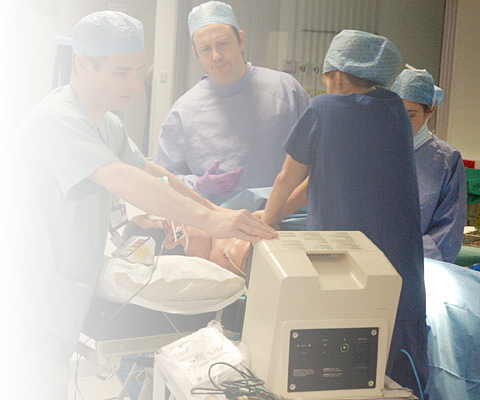Drugs Used During Cardiac Arrest
As a member of the Cardiac Arrest Team you must be familiar with the Adult Life Support (ALS) algorithm and the drugs used. There are two commonly-encountered situations:
- Ventricular fibrillation (VF) or pulseless ventricular tachycardia (VT)
- Asystole or pulseless electrical activity (PEA)
Adrenaline is an essential part of the management of both situations. Other drugs are given when appropriate.
The following drugs are used during cardiac arrest:
For a link to the Resuscitation Council UK Adult advanced life support guidelines, see the Links on the Resources page.

Adrenaline
This is used for its alpha-adrenoreceptor effects, which predominate at high dose, i.e. 1 mg, and cause an increase in cardiac and cerebral perfusion.
The 'drug-shock-CPR-rhythm check' sequence is used so that adrenaline is given before shocking, and is circulated after shocking by CPR.
Atropine
A single 3 mg bolus dose is used in asystole to provide maximal vagal blockade. This is given in addition to the repeat doses of adrenaline.
Amiodarone
Expert consensus suggests that where VT/VF persists beyond 3 shocks, amiodarone 300 mg should be given by bolus injection.
Lignocaine at 1 mg/kg, may be used as an alternative, but not when amiodarone has already been given.
Magnesium sulphate
8 mmol, i.e. 4 ml, of a 50% solution, may be given for refractory VF where hypomagnesaemia is suspected, e.g. patients on potassium-losing diuretics.
Sodium bicarbonate 8.4%
This is only recommended if cardiac arrest is associated with hyperkalaemia or tricyclic antidepressant overdose.
Calcium chloride 10%
This is indicated when PEA is due to hyperkalaemia, hypocalcaemia or magnesium overdose, e.g. during treatment of pre-eclampsia.
The initial dose is 10 ml of a 10% solution.
Do not give calcium solutions and sodium bicarbonate simultaneously by the same IV line.